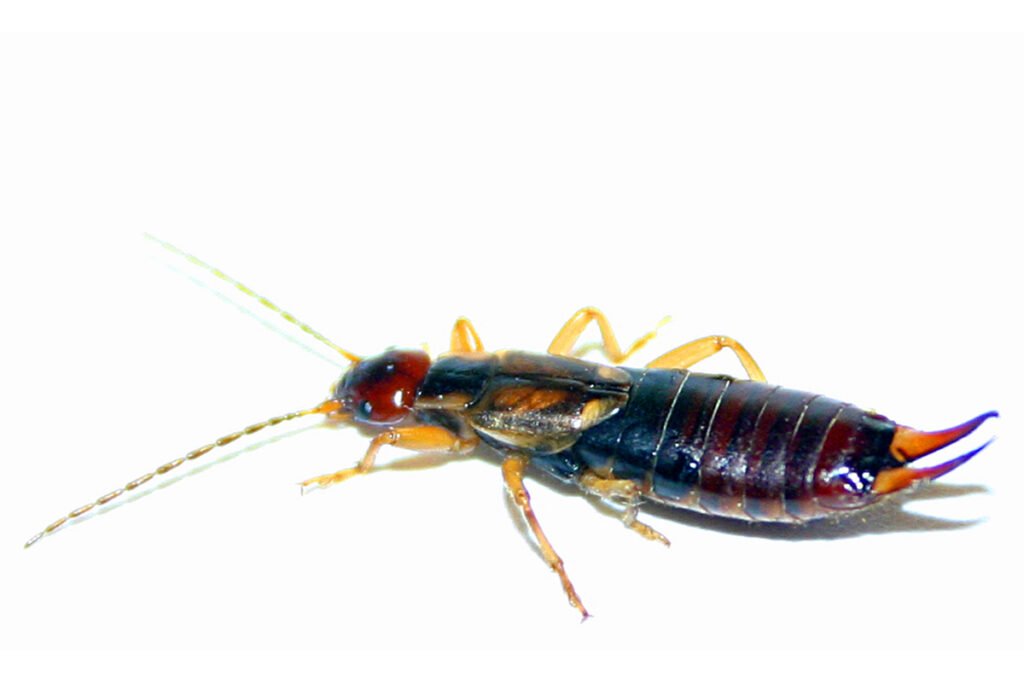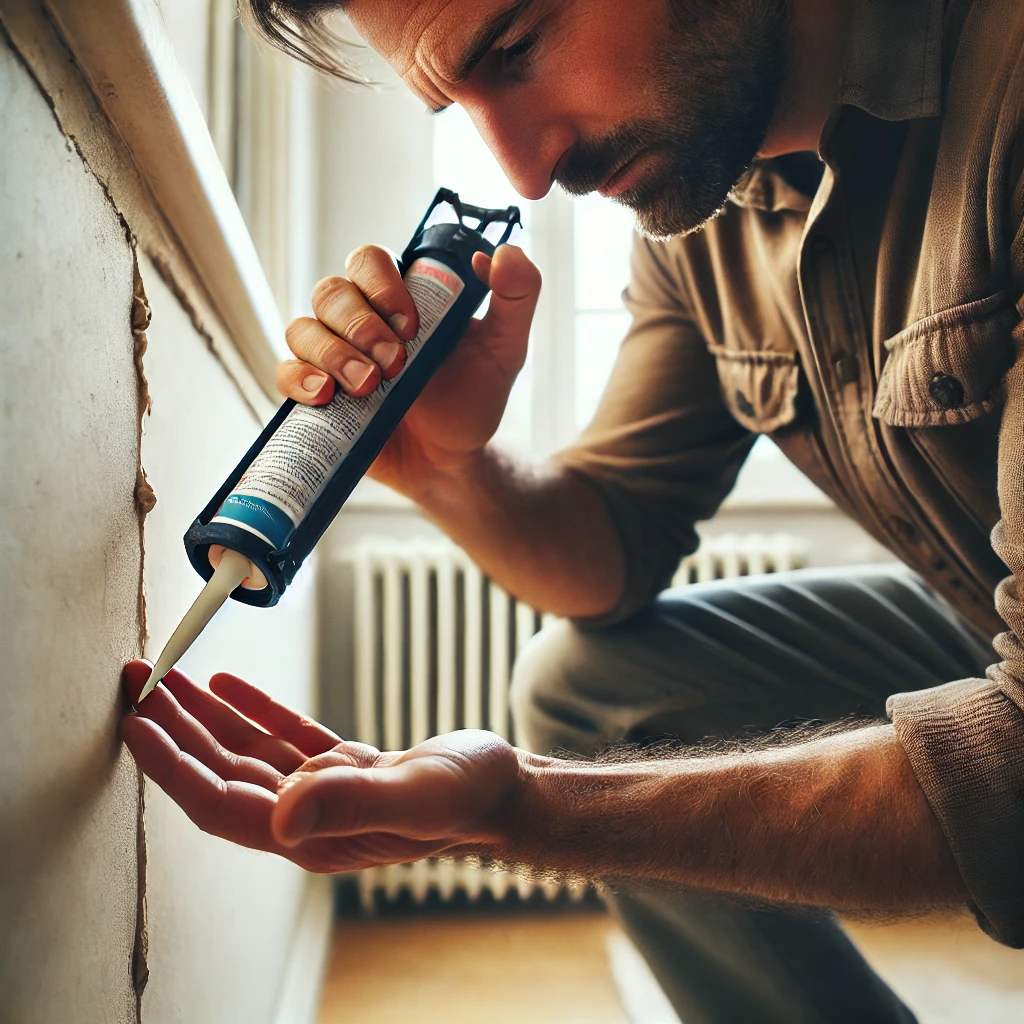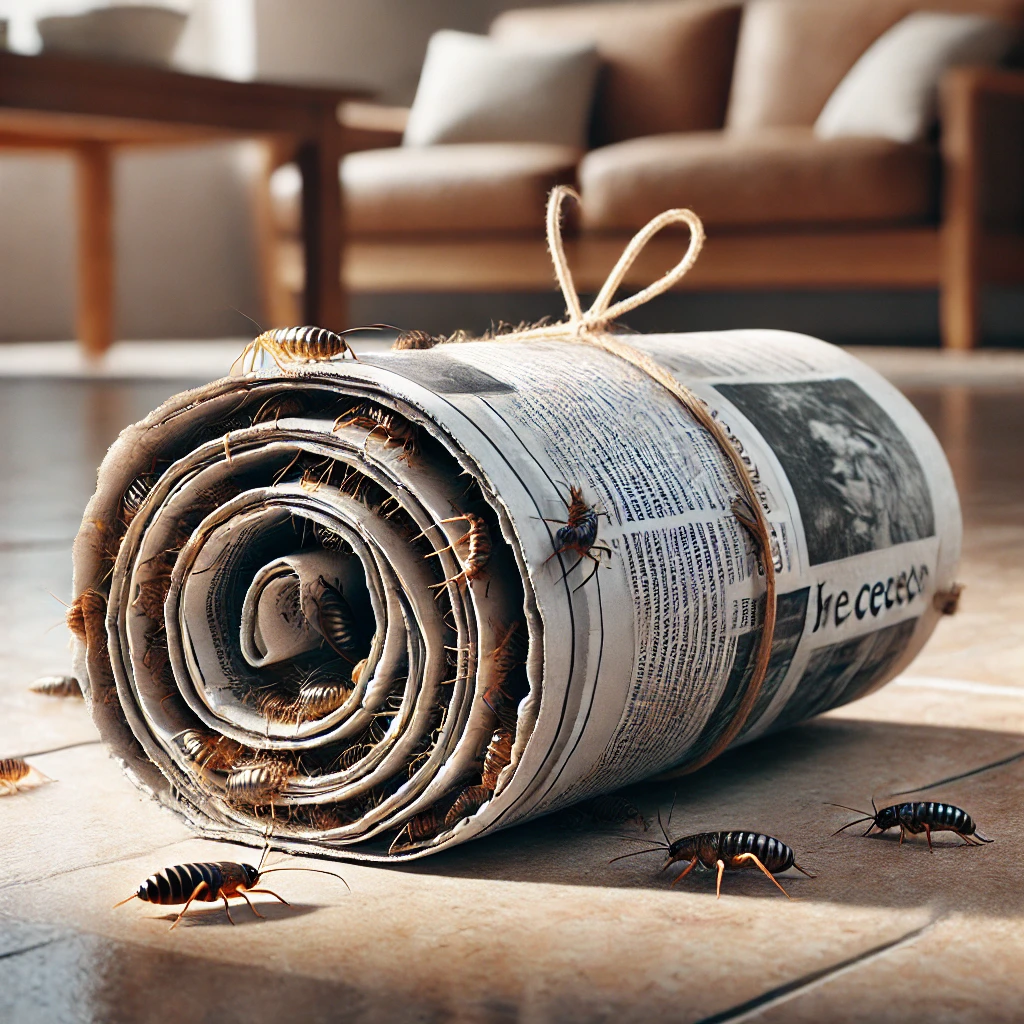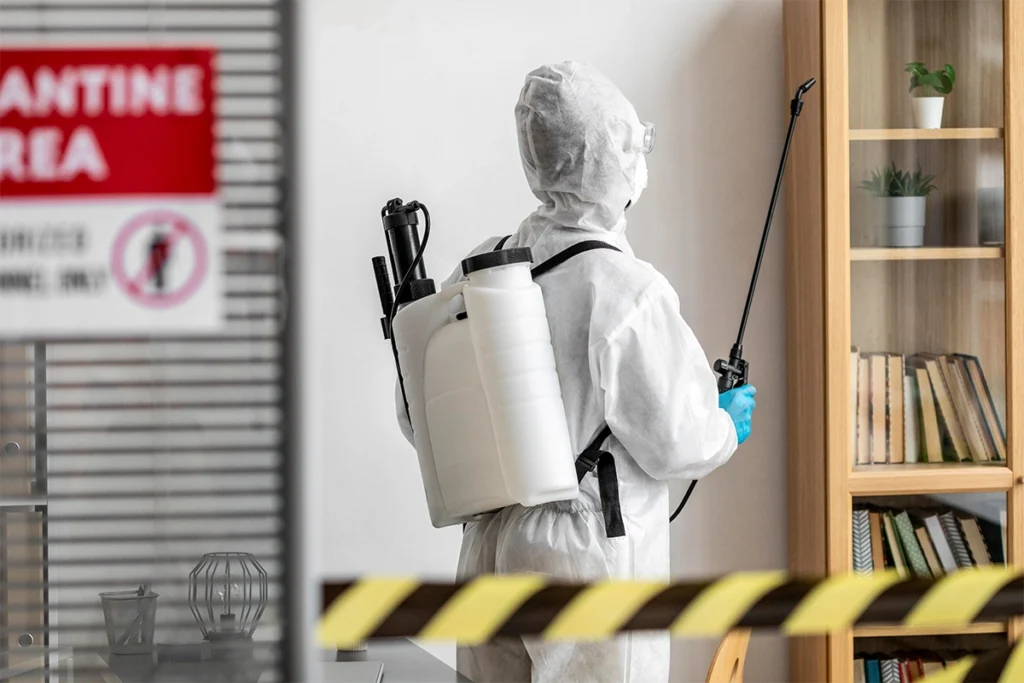Introduction

Earwigs, commonly known as pincher bugs due to their distinctive pincers, are unwelcome guests who can find their way into our homes. While they are generally harmless to humans, their presence can be unsettling and indicate underlying moisture issues in your house. If you’re wondering how to get rid of earwigs in your home, you’re not alone.
These nocturnal insects are attracted to dark, damp environments, making basements, bathrooms, and kitchens prime targets. Understanding how to eliminate earwigs effectively is essential for maintaining a comfortable and pest-free home. In this comprehensive guide, we’ll explore proven methods for quickly and safely exterminating earwigs in your house.
From natural remedies to professional pest control earwig solutions, we’ll cover everything you need to know to eliminate these pests. Whether you’re dealing with a minor intrusion or a more significant infestation, our step-by-step strategies will help you reclaim your home. Read on to discover effective ways to banish earwigs and prevent them from returning.
How to Get Rid of Earwigs in Your House Fast
Dealing with an earwig infestation can be frustrating, but you can eliminate these pests quickly and effectively with the right approach. If you’re wondering how to get rid of earwigs in your house fast, follow these step-by-step methods to ensure a swift and lasting solution.
Step 1: Identify and Seal Entry Points

Earwigs often enter homes through tiny cracks and gaps. To prevent more earwigs from coming in:
- Inspect Your Home’s Exterior: Look for cracks in the foundation, gaps around doors and windows, and openings around utility pipes.
- Seal Gaps and Cracks: Seal any openings with caulk or weatherstripping. Pay special attention to basement windows and doors leading outside.
- Install Door Sweeps: Adding door sweeps to exterior doors can prevent earwigs and other pests from entering.
Step 2: Reduce Moisture Inside Your Home
Earwigs are attracted to moist environments. Reducing humidity levels can make your home less inviting:
- Fix Leaks: Repair any leaking pipes, faucets, or appliances promptly.
- Use Dehumidifiers: Place dehumidifiers in damp areas like basements, bathrooms, and crawl spaces.
- Improve Ventilation: Use exhaust fans to ensure proper ventilation in kitchens and bathrooms.
Step 3: Remove Earwig Attractants
Eliminate sources that may attract earwigs into your home:
- Declutter: Remove piles of newspapers, magazines, and cardboard boxes that can harbor moisture.
- Store Items Properly: Keep stored items off the floor and away from walls to reduce hiding spots.
- Clean Regularly: Vacuum and dust regularly to remove food particles and debris that may attract earwigs.
Step 4: Set Up Earwig Traps

Using traps can help you capture and remove earwigs already inside:
- DIY Rolled Newspaper Trap:
- How to Do It: Roll up a damp newspaper and secure it with rubber bands.
- Placement: Place the rolled newspaper in areas where you’ve seen earwigs.
- Aftermath: In the morning, dispose of the newspaper containing the earwigs in a sealed plastic bag.
- Oil and Soy Sauce Trap:
- How to Do It: Fill a shallow container with equal parts vegetable oil and soy sauce.
- Placement: Place the container near baseboards or other areas of activity.
- Aftermath: Earwigs are attracted to the mixture and will drown in the liquid. Dispose of the contents as needed.
- Store-Bought Earwig Traps:
- Availability: Purchase sticky or baited traps designed for earwigs from a local hardware store.
- Usage: Follow the manufacturer’s instructions for placement and disposal.
Step 5: Use Natural Repellents
Natural remedies can deter earwigs without the use of harsh chemicals:
- Diatomaceous Earth (DE):
- How It Works: DE is a natural powder that dehydrates and kills earwigs upon contact.
- Application: Sprinkle a thin layer around baseboards, under appliances, and other areas where earwigs are active.
- Safety Note: Use food-grade DE and avoid inhaling the dust.
- Essential Oil Sprays:
- Effective Oils: Eucalyptus, lavender, and tea tree oils are known to repel earwigs.
- How to Make: Mix 15-20 drops of essential oil with water in a spray bottle.
- Application: Spray along baseboards, window sills, and other entry points.
Step 6: Apply Indoor-Safe Insecticides
If natural methods are insufficient, consider using insecticides labeled safe for indoor use:
- Select the Right Product:
- Look for insecticides specifically targeting earwigs or labeled for crawling insects.
- Application:
- Apply along baseboards, cracks and crevices, and other areas where earwigs are present.
- Follow all label instructions carefully for safe and effective use.
- Safety Precautions:
- Keep pets and children away from treated areas until the product has dried.
- Wear gloves and avoid contact with skin and eyes during application.
Step 7: Consult Professional Pest Control
For severe infestations or if DIY methods are not effective:
- When to Call:
- If earwigs persist after you’ve tried multiple methods.
- Benefits:
- Professional pest control experts can identify hidden entry points and use more potent treatments.
- They can provide ongoing solutions to prevent future infestations.
Additional Tips for Quick Results
- Act Promptly: Addressing the problem at the first sign of earwigs increases the chances of eliminating them quickly.
- Maintain Outdoor Areas:
- Remove mulch, dead leaves, and other debris near your home’s foundation.
- Keep shrubs and vegetation trimmed back to reduce hiding places.
By following these steps on how to get rid of earwigs and how to exterminate earwigs effectively, you can achieve a pest-free home swiftly. Implementing both immediate actions and long-term prevention strategies ensures that earwigs won’t return.
How to Exterminate Earwigs Safely
Safety should be a top priority when it comes to exterminating earwigs in your home. Whether dealing with a minor nuisance or a significant infestation, using safe and effective methods ensures you eliminate these pests without harming yourself, your family, or the environment. Here’s a comprehensive guide on how to get rid of earwigs safely and efficiently.
Understanding Safe Extermination Practices
Before proceeding, it’s essential to understand that earwigs, also known as pincher bugs, can be controlled using natural and chemical methods. Choosing the right approach depends on the severity of the infestation and your personal preferences.
Option 1: Use Indoor-Safe Insecticides
Selecting the Right Insecticide
- Choose Products Labeled for Indoor Use: Look for insecticides specifically designed to eliminate earwigs or labeled for general crawling insects.
- Eco-Friendly Options: Consider products with natural ingredients or those that are environmentally friendly.
Application Tips
- Target Problem Areas: Apply insecticide along baseboards, around windows and doors, under sinks, and in any cracks or crevices where earwigs may hide.
- Follow Instructions Carefully: Always read and adhere to the manufacturer’s guidelines regarding application methods and safety precautions.
- Ventilate: Ensure the area is well-ventilated during and after application.
Safety Precautions
- Protect Yourself: Wear gloves, long sleeves, and, if necessary, a mask to prevent skin contact or inhalation.
- Keep Away from Children and Pets: Secure the treated areas to prevent accidental exposure until the product has dried completely.
Option 2: Natural and Non-Toxic Methods
Natural remedies can be safe and effective if you’re looking for ways to get rid of earwigs in your house without chemicals.
Diatomaceous Earth (DE)
- How It Works: DE is a natural powder made from fossilized algae that dehydrates and kills earwigs upon contact.
- Application:
- Sprinkle food-grade DE in areas with active earwigs along baseboards, under appliances, and corners.
- Use a duster or applicator for even distribution.
- Safety Note: While DE is non-toxic, avoid inhaling the dust. Wear a mask during application.
Essential Oil Sprays
- Effective Oils: Eucalyptus, lavender, peppermint, and tea tree are natural repellents.
- How to Use:
- Mix 10-15 drops of essential oil with water in a spray bottle.
- Add a few drops of mild dish soap to help the solution adhere to surfaces.
- Spray along entry points, baseboards, and areas where you’ve seen earwigs.
- Benefits: Safe for indoor use and leaves a pleasant scent.
Boric Acid
- Effectiveness: Boric acid is an insecticide that can kill earwigs when ingested.
- Application:
- Lightly dust boric acid in cracks, crevices, and areas of activity.
- Safety Precautions:
- Keep away from children and pets, as ingestion can be harmful.
- Use sparingly and follow label instructions.
Option 3: Traps and Physical Removal
Implementing traps is a safe way to reduce earwig populations without chemicals.
Homemade Traps
- Oil and Soy Sauce Trap:
- How It Works: Earwigs are attracted to the scent and drown in the liquid.
- Setup:
- Fill a shallow container with equal parts vegetable oil and soy sauce.
- Bury the container so the rim is level with the ground or floor.
- Placement: Place near baseboards, basements, or wherever earwigs are active.
- Rolled Newspaper Trap:
- How It Works: Earwigs seek dark, damp places to hide.
- Setup:
- Moisten a rolled-up newspaper or cardboard tube.
- Secure it with rubber bands.
- Placement: Leave it overnight in affected areas.
- Disposal: In the morning, dispose of the trap in a sealed plastic bag.
Vacuuming
- Immediate Removal:
- Use a vacuum cleaner to remove visible earwigs.
- Empty the vacuum contents into a sealed bag and dispose of it outside.
Option 4: Professional Pest Control Services

If DIY methods haven’t resolved the issue, professional pest control earwig services can provide a safe and effective solution.
Advantages of Professional Services
- Expertise: Professionals can effectively identify the infestation’s source and target treatment.
- Specialized Treatments: Access to treatments that are safe for indoor use but more potent than over-the-counter options.
- Prevention Advice: Recommendations on preventing future infestations.
Choosing a Reliable Service
- Licensed and Insured: Ensure the company is certified and follows safety regulations.
- Eco-Friendly Options: Ask about non-toxic or low-toxicity treatment options.
- Reputation: Read reviews and ask for referrals to find a trustworthy provider.
Safety Tips for Extermination
- Read Labels Carefully: Always follow the manufacturer’s instructions when using natural products or chemical insecticides.
- Protective Gear: Gloves, masks, and protective clothing can prevent exposure.
- Store Products Safely: Keep all extermination products out of reach of children and pets.
- Dispose of Waste Properly: Follow local guidelines for disposing of traps and unused products.
Monitoring and Follow-Up
- Regular Inspections: After treatment, regularly check for signs of earwigs to ensure they haven’t returned.
- Maintain Preventive Measures: Continue sealing entry points and reducing moisture to keep earwigs at bay.
- Educate Household Members: Make sure everyone in the home knows how to spot and prevent earwigs.
By following these safe extermination methods, you can effectively address how to get rid of earwigs in your house without compromising safety. Whether you prefer natural remedies or need professional assistance, these strategies offer practical solutions to eliminate earwigs and prevent future infestations.
Combining extermination with preventive measures is the best way to keep your home earwig-free. If you’re also dealing with earwigs in your garden, consider reading about managing them outdoors to prevent them from migrating inside.
Preventing Earwigs from Returning to Your Home
After successfully learning how to get rid of earwigs in your house, it’s crucial to implement preventive measures to ensure these pests don’t come back. Here are effective strategies to keep earwigs, or pincher bugs, from returning to your home.
Maintain a Dry Environment
Earwigs are attracted to moisture. Reducing humidity levels inside your home makes it less inviting for them:
- Fix Leaks Promptly: Repair any leaking faucets, pipes, or roofing to prevent excess moisture.
- Use Dehumidifiers: Place dehumidifiers in damp areas like basements, crawl spaces, and bathrooms.
- Improve Ventilation: Ensure proper airflow by using exhaust fans in kitchens and bathrooms.
- Proper Drainage: Ensure gutters and downspouts direct water away from your home’s foundation.
Seal Entry Points
Prevent earwigs from entering your house by blocking their access routes:
- Inspect and Repair: Regularly check for cracks in the foundation, gaps around windows and doors, and openings around utility lines.
- Use Caulk and Weatherstripping: Seal cracks and gaps with high-quality caulk; install weatherstripping where needed.
- Install Door Sweeps: Add door sweeps to exterior doors to eliminate gaps underneath.
- Screen Openings: Ensure that vents, chimneys, and attic fans have screens to block entry.
Eliminate Outdoor Attractants
Reducing earwig habitats around your home’s exterior can prevent them from venturing inside:
- Remove Yard Debris: Clear leaves, mulch, grass clippings, and other organic materials near the foundation.
- Trim Vegetation: Keep shrubs, trees, and other plants trimmed back at least one foot from the house.
- Elevate Firewood and Storage: Store firewood, lumber, and other materials off the ground and away from walls.
Regular Home Maintenance
Consistent upkeep can deter earwigs from settling in your home:
- Clean Gutters: Regularly clean gutters to prevent water buildup that attracts earwigs.
- Declutter Indoors: Reduce clutter like newspapers, magazines, and cardboard boxes that can provide hiding spots.
- Vacuum Regularly: Clean floors and carpets to remove food particles and debris.
- Monitor Moisture Levels: Use moisture detectors in areas prone to dampness.
Use Natural Deterrents
Incorporate natural repellents to make your home less appealing to earwigs:
- Essential Oils: Eucalyptus, peppermint, or lavender oil sprays can repel earwigs. Apply them along baseboards and entry points.
- Diatomaceous Earth (DE): Spread food-grade DE around the perimeter of your home and in potential entry points to deter and eliminate earwigs.
Educate Household Members
Ensure everyone in your home understands how to prevent earwig infestations:
- Awareness: Teach family members the importance of keeping doors closed and reporting earwig sightings.
- Prompt Action: Encourage immediate cleaning of spills and repair of leaks.
Professional Pest Control Evaluation
Consider periodic assessments by pest control professionals:
- Regular Inspections: Schedule annual or bi-annual inspections to catch potential issues early.
- Pest Control Earwig Services: Professionals can provide targeted treatments and advice on effectively exterminating earwigs.
How Long Does It Take to Get Rid of Earwigs?
When dealing with an earwig infestation, a common question arises: “How long does it take to get rid of earwigs?” The timeline can vary based on several factors, including the severity of the infestation, the methods used, and how consistently preventive measures are applied.
Factors Affecting the Timeline
- Severity of Infestation: DIY methods may resolve A minor intrusion within a few days. However, a significant infestation could take several weeks to eliminate.
- Methods Used: Combining multiple strategies—such as traps, natural repellents, and insecticides—can accelerate the process of getting rid of earwigs.
- Consistency: Regularly applying treatments and monitoring progress is crucial for swift results.
- Environmental Conditions: Addressing moisture issues promptly can significantly reduce the time needed to get rid of earwigs.
Typical Timeframes
- Immediate Actions (1-3 Days):
- Traps: Setting up DIY or store-bought traps can start capturing earwigs within 24 hours.
- Natural Repellents: Using essential oils or diatomaceous earth may deter earwigs quickly.
- Short Term (1-2 Weeks):
- DIY Methods: Consistent use of natural remedies and sealing entry points can reduce earwig populations within a week or two.
- Moisture Reduction: Fixing leaks and using dehumidifiers will make your home less attractive over time.
- Professional Intervention (Immediate to 1 Week):
- Pest Control Earwig Services: Depending on the infestation level, professionals can often eliminate earwigs more rapidly, sometimes within a single treatment session.
Tips for Faster Results
- Combine Methods: For a more practical approach to getting rid of earwigs in your house fast, utilize both natural and chemical solutions.
- Maintain Cleanliness: Regular cleaning removes attractants and can expedite the extermination process.
- Prevent Re-entry: Seal entry points to stop new earwigs from entering, ensuring that efforts to exterminate earwigs are not undermined.
Myths and Misconceptions About Earwigs
Earwigs, commonly known as pincher bugs, are often misunderstood due to various myths and misconceptions. Clearing these misunderstandings can help you effectively address how to get rid of earwigs without unnecessary fear.
Myth 1: Earwigs Crawl into People’s Ears
One of the most widespread myths is that earwigs deliberately crawl into human ears to burrow into the brain or lay eggs.
- Fact: Earwigs do not seek out human ears. While their name originates from the Old English word ēare (ear) and wicga (insect), this is purely coincidental. They prefer dark, moist environments like under rocks or logs, not human ears.
Myth 2: Earwigs Are Dangerous and Poisonous
Many people believe earwigs are harmful and can pose a threat to humans.
- Fact: Earwigs are not poisonous and do not transmit diseases. Their pincers may look intimidating but are primarily used for defense and mating rituals. If handled roughly, they might pinch, but this usually causes little to no harm.
Myth 3: Earwig Infestations Indicate a Dirty Home
There’s a misconception that having earwigs means your house is unclean.
- Fact: Earwigs are attracted to moisture and shelter, not dirt or filth. Even spotless homes can encounter earwig issues if there are damp areas or easy entry points. Understanding how to eliminate earwigs in your house involves addressing these factors.
Myth 4: Earwigs Are Impossible to Eliminate
Some believe that once earwigs enter your home, they are there to stay.
- Fact: Earwigs can be effectively controlled. You can eliminate them by following proper extermination steps, such as sealing entry points and reducing indoor humidity. Utilizing both DIY methods and professional pest control earwig services enhances success.
Myth 5: Earwigs Damage Homes and Furniture
People often think earwigs will eat wood or damage household items.
- Fact: Earwigs do not cause structural damage or chew through wood like termites. They may occasionally feed on houseplants or organic debris but pose no threat to your home’s integrity.
Conclusion
Earwigs, or pincher bugs, can be unwelcome in your home, but with the proper knowledge and strategies, you can effectively eliminate them and prevent future infestations. Understanding how to get rid of earwigs involves a combination of immediate actions and long-term preventive measures.
Key Takeaways:
- Identify and Seal Entry Points: Prevent earwigs from entering by sealing cracks and gaps around your home.
- Reduce Moisture: Lower humidity levels indoors to make your home less attractive to earwigs.
- Use Safe Extermination Methods: Choose from natural remedies, traps, or insecticides to eliminate existing earwigs.
- Maintain Cleanliness: Regular cleaning and decluttering can reduce hiding spots and food sources.
- Prevent Reinfestation: Implement ongoing preventive measures to keep earwigs from returning.
Additional Resources
For further information and assistance:
- National Pest Management Association
- Website: www.pestworld.org
- Integrated Pest Management (IPM) Programs
- Website: www.ipm.ucanr.edu/
By taking these steps, you can create an uninviting environment for earwigs, ensuring a comfortable and pest-free home. Consistency is critical; regular maintenance and monitoring are essential for long-term success.
FAQs About Getting Rid of Earwigs
How do I get rid of earwigs in my house naturally?To get rid of earwigs naturally, use methods such as setting up DIY traps like rolled-up damp newspapers and diatomaceous earth around entry points and applying essential oil sprays made with eucalyptus or lavender. Reducing moisture and sealing entry points are also effective natural strategies.
What attracts earwigs to my home?Earwigs are attracted to homes with moisture, shelter, and food sources. Damp areas like basements, bathrooms, and kitchens are particularly appealing. Organic debris, clutter, and easy access through cracks or gaps can also attract earwigs.
Are earwigs harmful to humans or pets?Earwigs are not harmful to humans or pets. They do not bite, sting, or transmit diseases. While they may pinch if handled roughly, this is rare and usually not painful.
How can I prevent earwigs from entering my home?Seal cracks and gaps around doors, windows, and foundations to prevent earwigs. Fix leaks and use dehumidifiers to reduce moisture inside your home. Keep your home’s exterior debris-free and trim vegetation to eliminate hiding spots.
Should I call a professional pest control service for earwigs?If you have a severe infestation or DIY methods have not been effective, contacting a professional pest control service may be beneficial. They can provide targeted treatments and expert advice on preventing future infestations.
Do earwigs cause damage to homes or furniture?Earwigs do not cause structural damage to homes or furniture. They may occasionally feed on houseplants or organic materials but are not known to harm property.
Can earwigs fly or climb into beds?While earwigs have wings, most species are not strong fliers and prefer to crawl. It is uncommon for earwigs to climb into beds. Keeping bedding off the floor and away from walls can reduce this unlikely occurrence.
How to get rid of pincher bugs quickly?To get rid of pincher bugs quickly, implement a combination of methods: seal entry points, reduce indoor moisture, set up traps, and use appropriate insecticides if necessary. Addressing the issue promptly increases the chances of swift elimination.




Hello.This post was really fascinating, especially since I was investigating for thoughts on this matter last week.